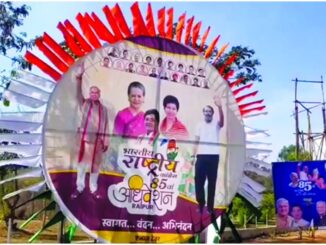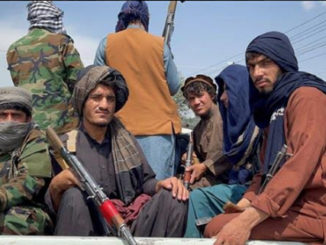
Guru Nanak Gurpurab, also known as Guru Nanak Jayanti and Guru Nanak ji’s Parkash Utsav, is a prominent festival for people who follow Sikhism. It is celebrated to commemorate the birth of the first Sikh Guru, Guru Nanak Dev Ji. It is the most important festival for the Sikh community and is celebrated with a lot of devotion and reverence.
The festival is celebrated on the day of Kartik Poornima, which is the fifteenth lunar day in the month of Kartik as per the Hindu calendar, and usually falls in the months of October and November as per the Gregorian calendar.
This year will mark the 552nd birth anniversary of Guru Nanak Dev ji and will be observed on Friday, 19th November 2021. Guru Nanak is the founder of Sikhism and is the first Guru of Sikhs.
He was a great Indian spiritual leader who believed in harmony and meditation in the name of the divine soul. His teachings and his way of devotion to the almighty were different from others and people of all religions respect him and his teachings.
He was the one who spread the message of humanity and mankind at a time when everyone was focusing on spreading their religion. He talked about women and their rights and equality. He was a great scholar but still used local languages to spread his message among the people while he journeyed in all four directions.
His teachings did not die with him but passed to further generations through his successor and his teachings are now included in Shri Guru Granth Sahib Ji which is a holy book of Sikhs that contains all the teachings of Sikh Gurus and other spiritual leaders as well.
Early Life
He was born in the year 1469 in “Rai Bhoe Ki Talwandi” on 15th April. This place was part of India by then but now it is known as Nankana Sahib, which is located in the territories of today’s Pakistan.
Guru Nanak Dev Ji birth place is near Lahore. Every year the birth anniversary of Guru Nanak Dev Ji is celebrated on full moon day in the month of Katak i.e. October – November. It falls on different dates every year and is celebrated by all the Sikhs around the world.
The name of his father was Mehta Kalu who worked as a village accountant and belonged to the Khatri caste and the name of his mother was Tripta who was very simple and a religious woman. He had an elder sister namely Nanki who loved his younger brother a lot. He was an extraordinary child from his childhood and his teachers and elders used to be astounded with his level of knowledge, understanding, and rational thinking on all the matters especially the spiritual ones. In his growing age only, he used to put questions on the prevailing rituals of the society and even refused to participate in such rituals and religious activities and he also put questions on casteism and the practice of idolatry. Even he refused to put the sacred thread on the ” Upanayana ritual”. Besides this, he was very intelligent and by the age of 16 only he learned many languages such as Sanskrit, Persian, Hindi, etc.
Two Important Incidents
When his father realized that Guru Nanak was not interested in farming or related activities so he thought of giving him some money for the business transaction so that he could do something profitable. Thus, he gave twenty rupees to him and sent Mardana with him to do some profitable transactions. As per the records, Guru Nanak saw some hungry and needy people on the way and spent the entire amount on his food and said what could be more profitable and called a true bargain than helping the needy. This incident is known as ” Sacha Sauda” or “True Bargain”.
Another incident was of Sultanpur Lodhi. His beloved sister got married to Jai Ram. She moved to Sultanpur. Guru Nanak also went with her sister and brother-in-law for some days and started working there under his brother-in-law. In 1487, He was married to Mata Sulakhni and had two sons namely, Sri Chand and Lakhmi Das. In Sultanpur, he used to visit a nearby river to bathe and meditate. One day he went there and did not return for three days. When he returned, he was looking like a man possessed and when he spoke, he said “There is no Hindu or Muslim”. These words were considered as the beginning of his teachings.
Spiritual Journeys (Udasiyan)
He took majorly four spiritual journeys in the sub-continent to spread the message of God. First of all, he visited his parents and told them the importance of these journeys and then he started travelling. In the first journey, he covered most of the parts of Pakistan and India and this journey took almost 7 years i.e. from 1500 AD. to 1507 AD. He covered most parts of present-day Sri Lanka in his second journey and it also took 7 years. He covered mountain regions in his third journey such as the Himalayas, Kashmir, Nepal, Sikkim, Tibet, and Tashkent. It took place from 1514 AD to 1519 AD and took almost 5 years to complete. He visited Mecca and other places in the Middle East on his fourth journey and it took 3 years. In his final journey, he spread the message in Punjab for two years. It is believed that he spent almost 24 years of his life on these journeys and travelled on foot to almost 28,000 km. Many languages were known to him but he usually used the local languages to spread his message with the people which became more effective during these journeys.
Teachings
He taught people that to reach God, we do not require any rituals and priests. He believed that every human being can have that level of spiritual perfection that can lead him to God. To attain God, he asked people to repeat the name of God. He taught people to live a life of spirituality by helping and serving others. He asked them to remain away from any kind of fraud or exploitation and living an honest life. Basically, through his teachings he founded three pillars of the new religion i.e. Sikhism that are mentioned below:
Naam Japna
This means repeating the name of the God and practising the name of the God through meditation in different modes such as singing, chanting, and reciting along with studying God’s Name and his virtues. For Sikhs, There is only one eternal creator and God ie. Waheguru and we should practice his name.
Kirat Karni
This simply means to earn honestly. He expected people to live a normal life of householders and earn honestly for living through their own physical or mental efforts and always accept both pleasure and sufferings as gifts and blessings of God.
Vand Chakna
This simply means to share and consume together. In this, he asked people to share some part of his wealth with the community. Practising Vand Chakna is an important pillar of Sikhism where every Sikh contributes as per whatever possible in his hands with the community. Sharing and Giving are important virtues of Sikhism founded by Guru Nanak Dev Ji.
His Contribution to Humanity
He was a very respectful and beloved leader at that time among the people of all faiths. Even today as well, people of other faiths respect and believe in his teachings.
During the period of Guru Nanak, the caste system was at its peak and he spoke against it. He reached people against all these discriminations such as caste, creed, race, status, etc. He taught people to see mankind above all and everything. He asked people to conquer their minds because if they can conquer their minds, they can conquer the world. Mankind is above all the ego and evil practices.
All human beings are equal and have equal light of God. It was the time by then when no respect and status used to give to women. He also spread messages related to women. He said without a woman, there is nothing and no one. Every person takes birth from a woman, is conceived in a woman, marries a woman, and several relations start and end with a woman. He said a woman should be respected in all the ways because she is above all and should not be ill-treated.
He spread this message everywhere and spoke about women’s rights and equality. Besides this, when everyone used to talk about his religion and wanted to spread that only, Guru Nanak was the one who was focusing on humanity and mankind. According to the Guru Nanak Dev history, there are so many stories and incidents related to his contribution to society.
Death (Joti Jot)
In his last days, he was living in Kartarpur, the city which was established by Guru Nanak himself in the year 1522 AD.
He became a very beloved and respectful spiritual leader by that time for his contribution to humanity and his teachings to society. Arguments were happening at that time on the funeral rites of Guru Nanak Dev Ji. Who would own the body of Guru Nanak because be it Sikhs, Hindus, or Muslims, everyone wanted to perform the funeral rituals according to them.
Then, Guru Nanak himself introduced the concept of “Joti Jot” and also explained it. He mentioned that only his mortal body would die but the light within the body was not perishable and would continue to enlighten. He said this light would pass to his new successor who was Guru Angad Dev Ji.
Guru Nanak Dev Ji took his last breath in Kartarpur on September 22, 1539 AD. Before that, he asked Sikhs and Hindus to place some flowers on his right side and Muslims to place flowers on his left side and asked them whichever flowers would remain fresh throughout the whole night, would have the permission for funeral rites.
When everyone came another morning to check Guru’s body and flowers, they were all very astonished to find no traces of Guru Nanak’s body but all the flowers were fresh as it is.
Therefore, everyone performed funeral rites according to them through those flowers. In this way, he was buried by the Muslims and cremated by the Sikhs and Hindus. A grave and a monument of remembrance, both were made. Now, a Gurdwara is there at the death place of Guru Nanak on the banks of the Ravi river in Pakistan. This site is considered a sacred place for all, especially Sikhs.





Be the first to comment